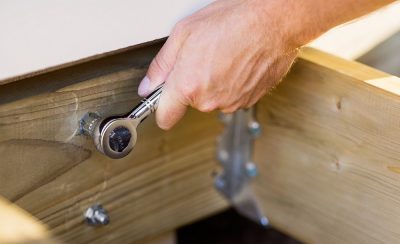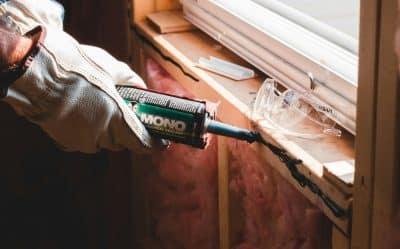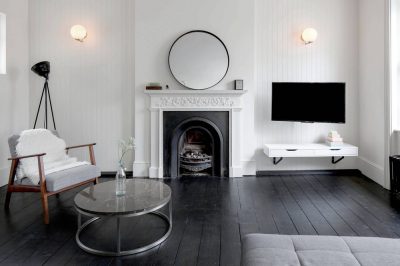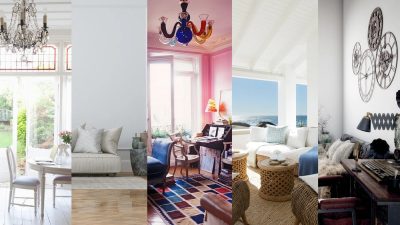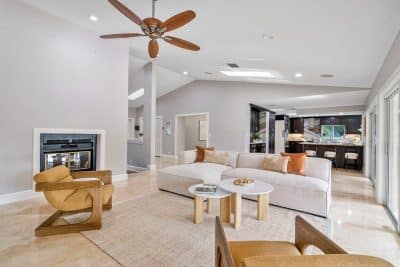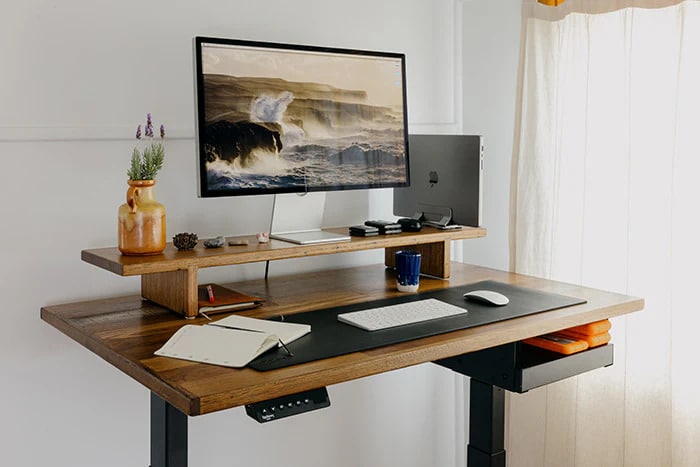
As remote work becomes increasingly mainstream, the importance of designing a home office that supports both comfort and productivity is growing. One trend that continues to dominate modern office spaces is the use of ergonomic furniture, particularly the standing desk. Introducing a height adjustable desk into your workspace early in the design process can transform the way you work, helping you stay active, comfortable, and focused throughout the day.
Embracing the Shift Toward Ergonomics
Modern home office design is evolving beyond aesthetics. While style remains important, the emphasis is now equally on creating environments that prioritize physical well-being. Prolonged sitting has been linked to a variety of health issues, from poor posture to decreased cardiovascular health. This has led many homeowners to seek ergonomic solutions that promote movement and flexibility.
Standing desks represent a cornerstone of this shift. They allow users to alternate between sitting and standing throughout the day, reducing the risks associated with sedentary behavior. When paired with ergonomic chairs, monitor stands, and other supportive accessories, a standing desk can play a vital role in maintaining long-term health without sacrificing design appeal.
Finding the Right Desk for Your Space
Selecting the perfect standing desk requires balancing style, functionality, and ergonomics. Fortunately, today’s options are more diverse than ever, making it easier to find a desk that fits your home office vision.
Look for a desk that complements the overall design of your workspace. Sleek, minimalist frames work well in contemporary settings, while natural wood finishes may suit more traditional or transitional interiors. Many height-adjustable desks now feature cable management systems, integrated charging ports, and customizable finishes, allowing them to seamlessly blend into your design without creating visual clutter.
When choosing a desk, also consider its range of height adjustments, stability, and ease of use. An electric lift mechanism is often preferred for its smooth transitions and reliability, while manual crank options may appeal to those seeking a more budget-friendly solution.
Designing Around Your Standing Desk
Integrating a standing desk into a modern home office isn’t just about dropping a new piece of furniture into the room. It’s about creating a cohesive environment where every element works together.
Start by considering the placement of your desk. Ideally, it should be positioned near a source of natural light, helping to reduce eye strain and boost mood. If windows aren’t available, use layered artificial lighting to mimic natural daylight conditions.
Furniture and accessories should support an easy transition between sitting and standing. Choose an ergonomic chair with adjustable features for seated tasks, and consider adding a standing mat to reduce fatigue when you’re on your feet. Adjustable monitor arms can ensure that your screen remains at eye level whether sitting or standing, helping maintain proper posture.
Storage solutions should be equally flexible. Mobile filing cabinets, open shelving, and lightweight organizational systems allow you to move items around as needed, creating a more dynamic and responsive workspace.
Prioritizing Movement Throughout the Day
Standing desks offer a fantastic opportunity to increase movement throughout the workday, but it’s important to use them effectively. Simply standing all day isn’t the solution; rather, the goal is to move between different positions to keep your body engaged.
Consider setting reminders to change your posture every thirty to sixty minutes. Alternating between sitting, standing, and brief walking breaks can reduce muscle fatigue and boost energy levels. Small stretches and mobility exercises can also be incorporated into your routine without disrupting your workflow.
Accessories like balance boards, active footrests, and under-desk treadmills can further encourage micro-movements and enhance the benefits of your standing desk setup.
Merging Wellness with Aesthetics
One of the most exciting aspects of modern home office design is how seamlessly wellness-oriented features can be integrated into beautiful spaces. Standing desks are no longer bulky, utilitarian pieces — many are now designed with the same attention to form as to function.
Opt for materials and finishes that match your overall decor. For example, a reclaimed wood desktop paired with a matte black frame can bring an industrial-chic vibe, while white laminate surfaces with minimalist legs can offer a sleek, contemporary look.
Personalizing your space with art, plants, and thoughtfully chosen accessories ensures that your office remains inspiring without becoming distracting. Greenery not only softens the look of a home office but also improves air quality and enhances mood — a perfect complement to an ergonomic, health-centered workspace.
The Future of Home Workspaces
As technology and wellness continue to intersect, the modern home office will likely evolve even further. Integrated tech, smart furniture, and design that encourages holistic health will become standard features rather than luxuries.
By incorporating a standing desk into your workspace today, you are taking a proactive step toward future-proofing your home office. It’s an investment not just in your productivity, but in your long-term health and well-being.
A thoughtfully designed space that merges beauty, comfort, and functionality will serve as a foundation for success — today, and in the years to come.


